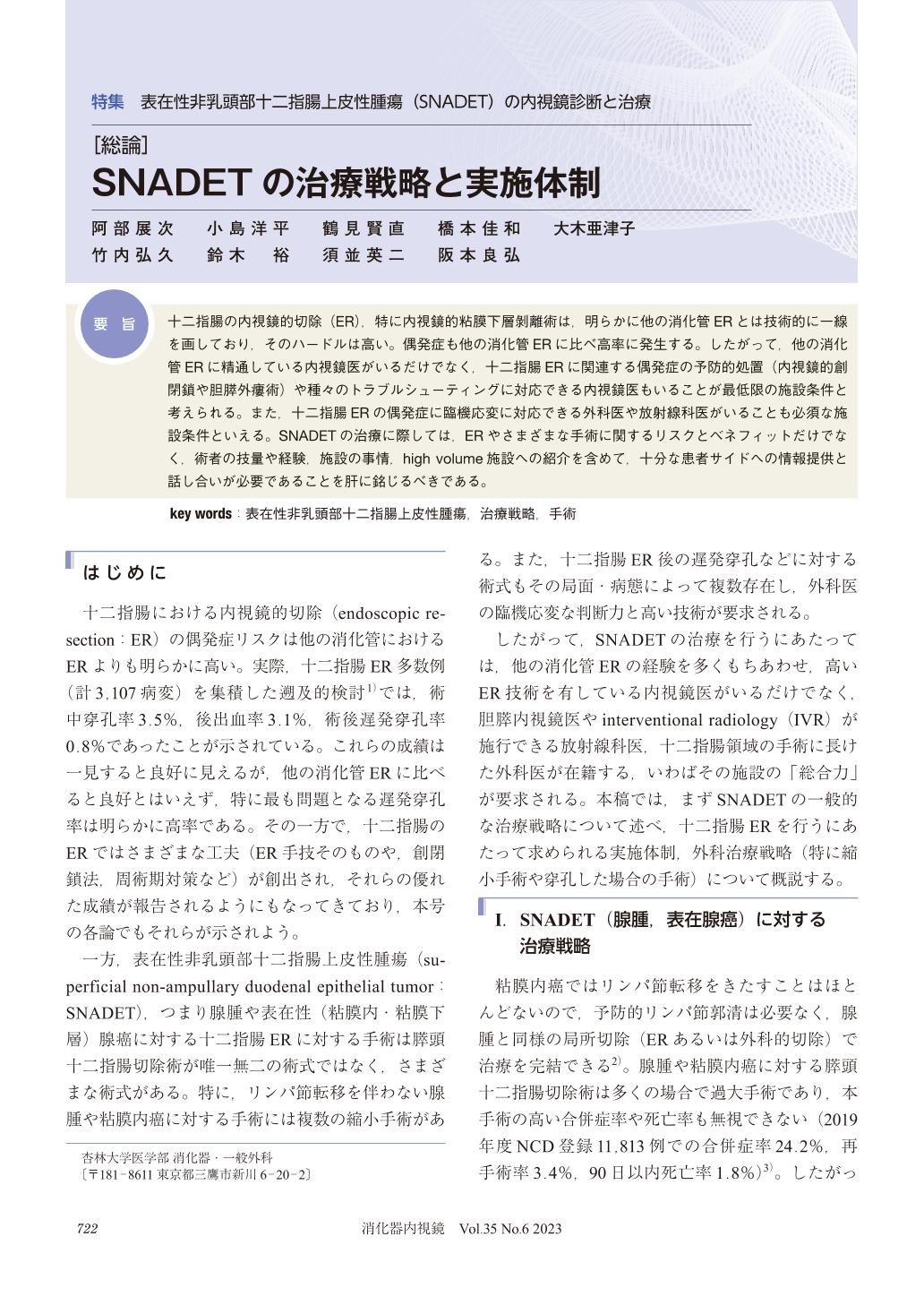Japanese
English
- 有料閲覧
- Abstract 文献概要
- 1ページ目 Look Inside
- 参考文献 Reference
要旨
十二指腸の内視鏡的切除(ER),特に内視鏡的粘膜下層剝離術は,明らかに他の消化管ERとは技術的に一線を画しており,そのハードルは高い。偶発症も他の消化管ERに比べ高率に発生する。したがって,他の消化管ERに精通している内視鏡医がいるだけでなく,十二指腸ERに関連する偶発症の予防的処置(内視鏡的創閉鎖や胆膵外瘻術)や種々のトラブルシューティングに対応できる内視鏡医もいることが最低限の施設条件と考えられる。また,十二指腸ERの偶発症に臨機応変に対応できる外科医や放射線科医がいることも必須な施設条件といえる。SNADETの治療に際しては,ERやさまざまな手術に関するリスクとベネフィットだけでなく,術者の技量や経験,施設の事情,high volume施設への紹介を含めて,十分な患者サイドへの情報提供と話し合いが必要であることを肝に銘じるべきである。
Duodenal ER (endoscopic resection) is technically more difficult, and the risk of delayed adverse events is higher, than that of other organs due to various anatomical features. Serious delayed adverse events include delayed perforation and postoperative bleeding. In the case of delayed perforation, surgical intervention may require surgery or prolonged hospitalization even if conservative treatment is possible. In the case of postoperative bleeding, radiologic intervention may rarely be required. Although various methods have been reported to prevent these adverse events after duodenal ER, facilities where duodenal ER is carried out must have a team of physicians (not only the gastrointestinal endoscopist but also a hepatobiliary pancreatic endoscopist, surgeon, and radiologist) who can manage or prevent these adverse events. Herein we first discuss treatment strategy for superficial non-ampullary duodenal epithelial tumors. We further discuss facility requirements for duodenal ER. Selection of approach (open or laparoscopic) and limited surgery should be determined based on tumor characteristics and technical/experimental aspects.

© tokyo-igakusha.co.jp. All right reserved.


